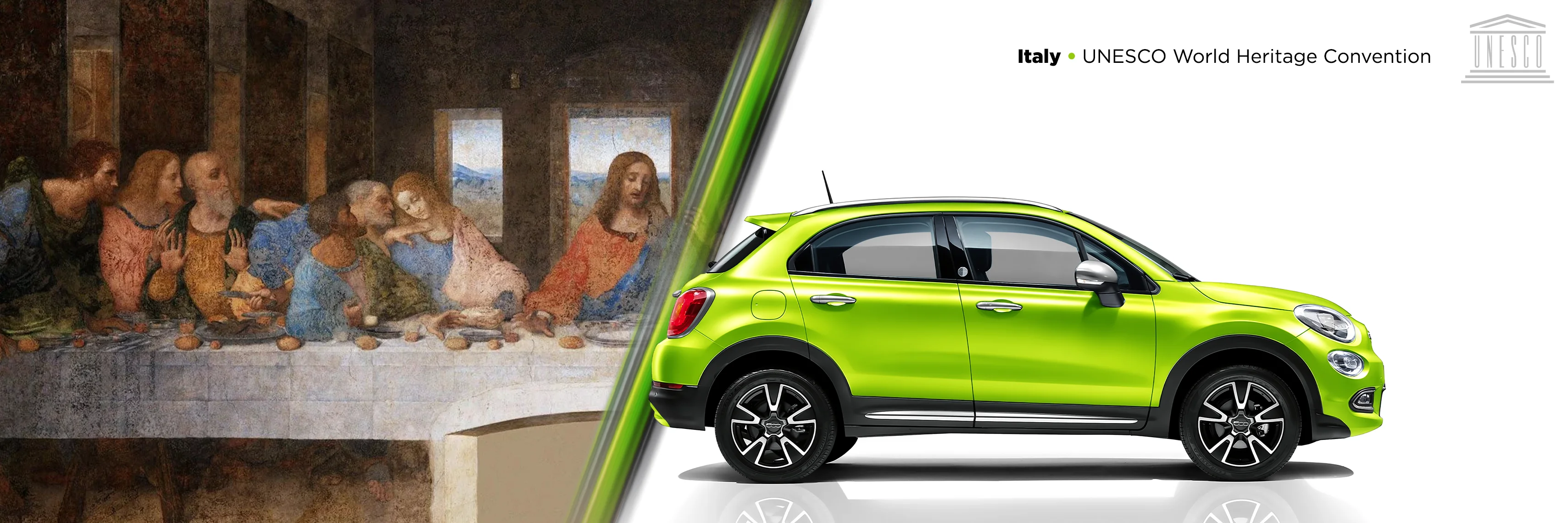IT
EN
ES
FR
IT
EN
ES
FR
This captivating artwork portrays the Last Supper of Jesus with his apostles before his passion and death. Leonardo's artistic sophistication is evident in the expressions of the characters and the precise composition, with each apostle reacting to Jesus' announcement of the imminent betrayal.
The church itself is an extraordinary example of Renaissance architecture, with the Last Supper located in the refectory of the adjacent convent. The work has unfortunately been damaged over the centuries but remains a universal icon of art and spirituality.
The inclusion in the UNESCO list underscores the importance of preserving and safeguarding this artwork and the church that houses it, so that future generations can admire and study this extraordinary masterpiece and understand its historical and spiritual significance. The Church of Santa Maria delle Grazie is a place that embodies human genius and artistic expression in a unique and astonishing way.

The Church of Santa Maria delle Grazie in Milan is an imposing architectural work of great significance, closely associated with Leonardo da Vinci's famous painting, The Last Supper, preserved within its walls. This precious church, built in the Lombard style of the early Renaissance, was included in the UNESCO World Heritage List in 1980 and is a tourist destination that attracts visitors from all around the world. Belonging to the Dominican Order and integrated into the parish of San Vittore al Corpo, this church stands as a powerful symbol of Renaissance Milan due to its captivating architecture and the presence of Leonardo's masterpiece.
Leonardo da Vinci's Last Supper, located in the refectory of the Dominican Convent of Santa Maria delle Grazie, depicts the moment when Jesus informs his disciples that one of them will betray him, causing shock among the participants of the Last Supper. This unprecedented masterpiece has been declared a UNESCO World Heritage Site and seeing it in person is an exhilarating experience, representing the pinnacle of the great Tuscan master's art.
The artwork underwent an extraordinary 25-year restoration and is now once again accessible to the public. The complex of Santa Maria delle Grazie has its origins in 1459 when Count Gaspare Vimercati donated a piece of land to the Dominican friars of Sant'Eustorgio. Although the convent was severely damaged during the bombings of 1943, it originally consisted of three cloisters.
Ludovico il Moro dedicated the church as the family funerary chapel following the death of his wife, Beatrice d'Este, in 1497. Although the beautiful tomb created for them was subsequently dismantled, with the cover and statues of the dukes later placed in the Certosa of Pavia. The Church of Santa Maria delle Grazie was recognized by UNESCO in 1980 not only as one of the greatest expressions of Renaissance art but also because it preserves Leonardo da Vinci's extraordinary work, which had a significant influence on Western painting. A visit to the Convent of Santa Maria delle Grazie allows you to dedicate the right amount of time to admire Leonardo's magnificent Last Supper and explore the complex, starting with the Basilica and the famous cloisters.
The Tribune of Santa Maria delle Grazie, designed by Bramante, was conceived as a gentrified chapel inspired by Brunelleschi's Old Sacristy: it's an imposing cube with a hemispherical dome at the center, surrounded by pendentives.
The Cloister of the Frogs, also known as the Small Cloister, is a must-see attraction. Dating back to the late 15th century, it gets its name from the fountain at its center, adorned with four bronze statues of frogs spouting water.
To conclude, take a moment to sit on one of the benches in the square and enjoy the vibrant atmosphere. Here, you will witness a constant flow of people from different parts of the world and belonging to various cultures, all within a magical architectural setting.